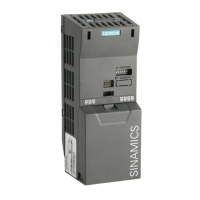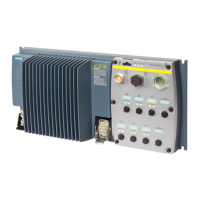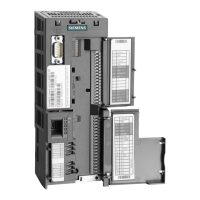Functions
5.7 Closed-loop control
CU240S and CU240E Control Units, FW 3.2
116 Operating Instructions, 03/2009, A5E02440075B AA
CAUTION
Use a shielded cable to connect the speed encoder. The shield must not be interrupted by
terminal points between the encoder and inverter.
Setting the encoder voltage
The encoder voltage is set using the DIP switches at the front of the CU. If you use either a
BOP or a PC Connection Kit, you must remove this module in order to be able to access the
switches.
Table 5- 37 Encoder settings
Encoder type Setting the DIP switches* at the front of the CU
No encoder
9VXSSO\
9VXSSO\
7HUPLQDWH
7UDFN$
7HUPLQDWH
7UDFN%
7HUPLQDWH
7UDFN1
21
2345 67
$,
$,
2))
TTL encoder **
Supply voltage: 5 V
9VXSSO\
9VXSSO\
7HUPLQDWH
7UDFN$
7HUPLQDWH
7UDFN%
7HUPLQDWH
7UDFN1
21
2345 67
$,
$,
2))
HTL encoder
Supply voltage: 24 V
9VXSSO\
9VXSSO\
7HUPLQDWH
7UDFN$
7HUPLQDWH
7UDFN%
7HUPLQDWH
7UDFN1
21
2345 67
$,
$,
2))
*) DIP switches 1 and 2 are of no significance when setting the encoder voltage
**) When using standard TTL encoders, it is recommended that DIP switches 5, 6 and 7 are set to
OFF. If TTL encoders with a differential circuit are being used, and if a long cable is required (more
than 50 meters), then DIP switches 5, 6, and 7 can be set to ON.
WARNING
If DIP switch 3 is set to ON (24 V), a TTL encoder (voltage level 5 V) must not be
connected to the inverter.

